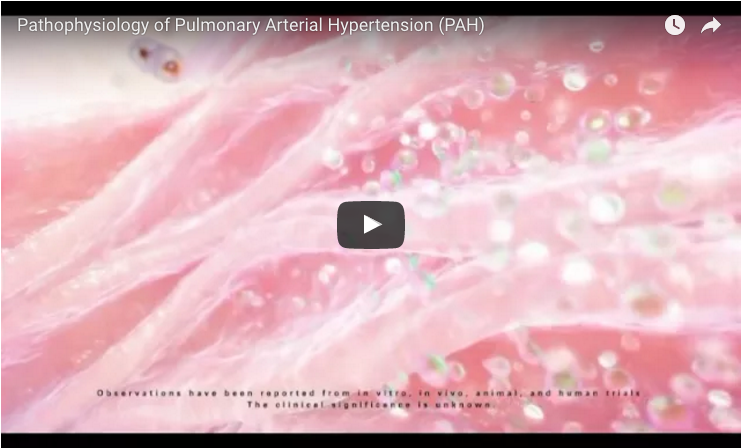Pathophysiology of Pulmonary Arterial Hypertension

https://www.youtube.com/watch?v=9a4untSzLzg
Pulmonary hypertension (PH) is a rare lung disease that refers to an increase in blood pressure in the pulmonary arteries. According to the WHO (World Health Organization) there are 5 different groups of PH and pulmonary arterial hypertension (PAH) belongs to the group 1.
Read more about all the 5 different classes of pulmonary hypertension here.
PAH is characterized by abnormally high blood pressure (hypertension) in the pulmonary artery – this artery carries blood from the heart (right ventricle) to the lungs.
In this video, shared by DiagnosisPAH in 2013, an educational overview of three principal pathways—endothelin, nitric oxide, and prostacyclin—involved in the pathogenesis of pulmonary arterial hypertension is discussed, with a very well made 3D animation, which explains every detail about this heart and lung condition, as well as its symptoms, and what happens to the patient’s body among other useful information.
Learn more about pulmonary arterial hypertension with a pulmonologist.
Pulmonary Hypertension News is strictly a news and information website about the disease. It does not provide medical advice, diagnosis or treatment. This content is not intended to be a substitute for professional medical advice, diagnosis, or treatment. Always seek the advice of your physician or other qualified health provider with any questions you may have regarding a medical condition. Never disregard professional medical advice or delay in seeking it because of something you have read on this website.







